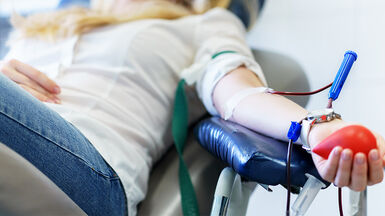Strong leadership, late diagnoses: new ECDC reports show Europe’s response to HIV
ECDC today publishes a first set of reports illustrating how countries have been responding to HIV up till 2012 based on their commitment outlined in the Dublin Declaration on Partnership to Fight HIV/AIDS in Europe and Central Asia. The reports find that, on balance, political leadership in response to HIV is rather strong in the countries of the region.
ECDC today publishes a first set of reports illustrating how countries have been responding to HIV up till 2012 based on their commitment outlined in the Dublin Declaration on Partnership to Fight HIV/AIDS in Europe and Central Asia. The reports find that, on balance, political leadership in response to HIV is rather strong in the countries of the region.
Since the beginning of the HIV epidemic, a total of almost 780 000 HIV infections have been reported across Europe. Recent surveillance data show that the number of people living with HIV in Europe is increasing. ECDC used information provided by countries in 2012 to produce a series of 10 reports covering key topics in the response to the epidemic: leadership and resources, treatment care and support, stigma and discrimination; specifically affected groups like people who inject drugs, men who have sex with men, sex workers, migrants, prisoners and the role of civil society.
ECDC Director Marc Sprenger stressed: “Especially in the current economic crisis we need to ensure both value for money in national HIV responses and that those who need treatment will be treated appropriately. In this scenario, investment in HIV prevention makes sound economic sense: to prevent HIV transmission is significantly cheaper than treating HIV infection.”
Director-General of the Directorate General Health and Consumers, Paola Testori Coggi, said: “It is encouraging that the report published today reveals strong political leadership in the fight against HIV in the European region. This ensures that the required services are delivered to those who need them, and particularly, that antiretroviral therapy is readily available to key populations.”
While the number of people receiving anti-retroviral therapy (ART) has increased considerably since 2009, overall rates of late diagnosis of HIV remain high across the region. Almost half of those diagnosed with HIV present with an already failing immune system (indicated by a low number of T/CD4 cells).
Read more
- Press release: Strong leadership, late diagnoses: new ECDC reports show Europe’s response to HIV
- Monitoring implementation of the Dublin Declaration on Partnership to Fight HIV/AIDS in Europe and Central Asia: 2012 progress reports
- Background and methods
- Thematic report: Leadership and Resources in the HIV response (also as Evidence Brief)
- Thematic report: HIV treatment, care and support (also as Evidence Brief)
- Thematic report: Sex workers
- Surveillance Report: HIV/AIDS in Europe 2011
- Implementing the Dublin Declaration on Partnership to Fight HIV/AIDS in Europe and Central Asia: 2010 Progress Report
- Monitoring implementation of the European Commission Communication and Action Plan for combating HIV/AIDS in the EU and neighbouring countries, 2009–2013
- ECDC Programme for Sexually Transmitted Infections, including HIV/AIDS and blood-borne viruses
- Monitoring implementation of the European Commission Communication and Action Plan for combating HIV/AIDS in the EU and neighbouring countries, 2009–2013







